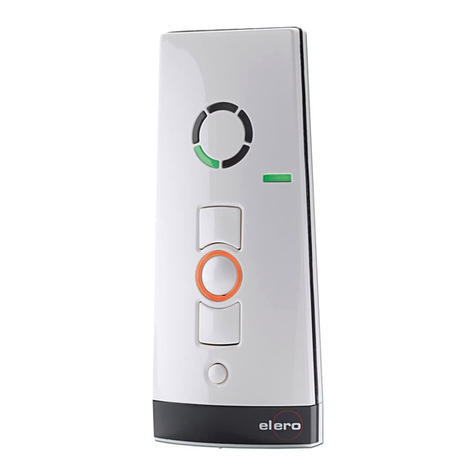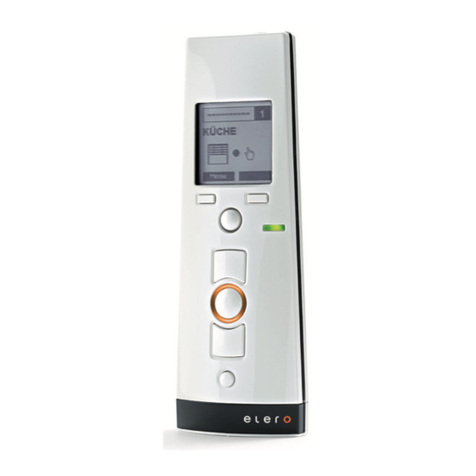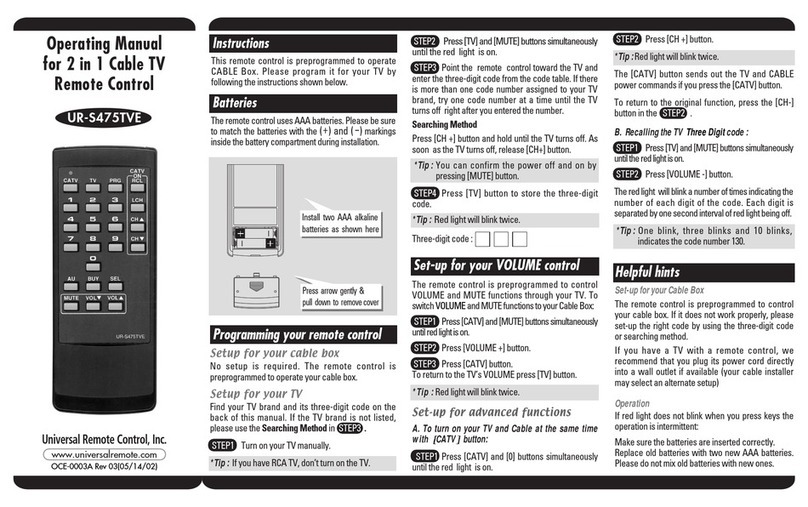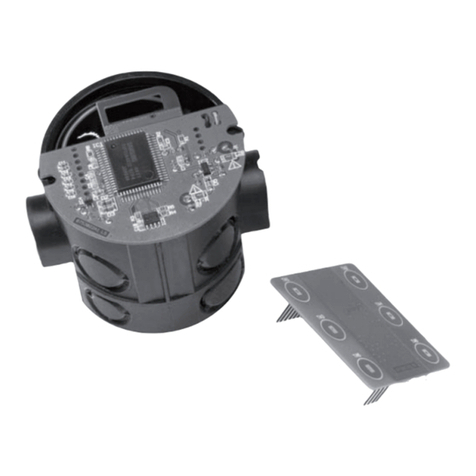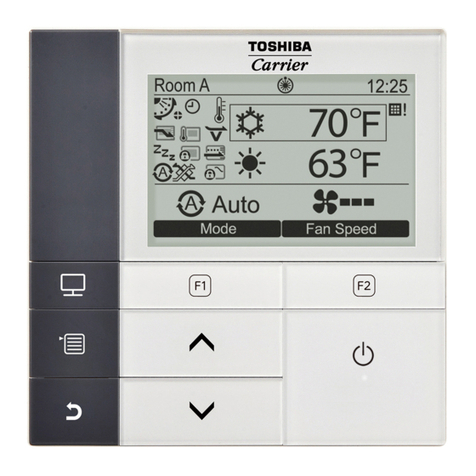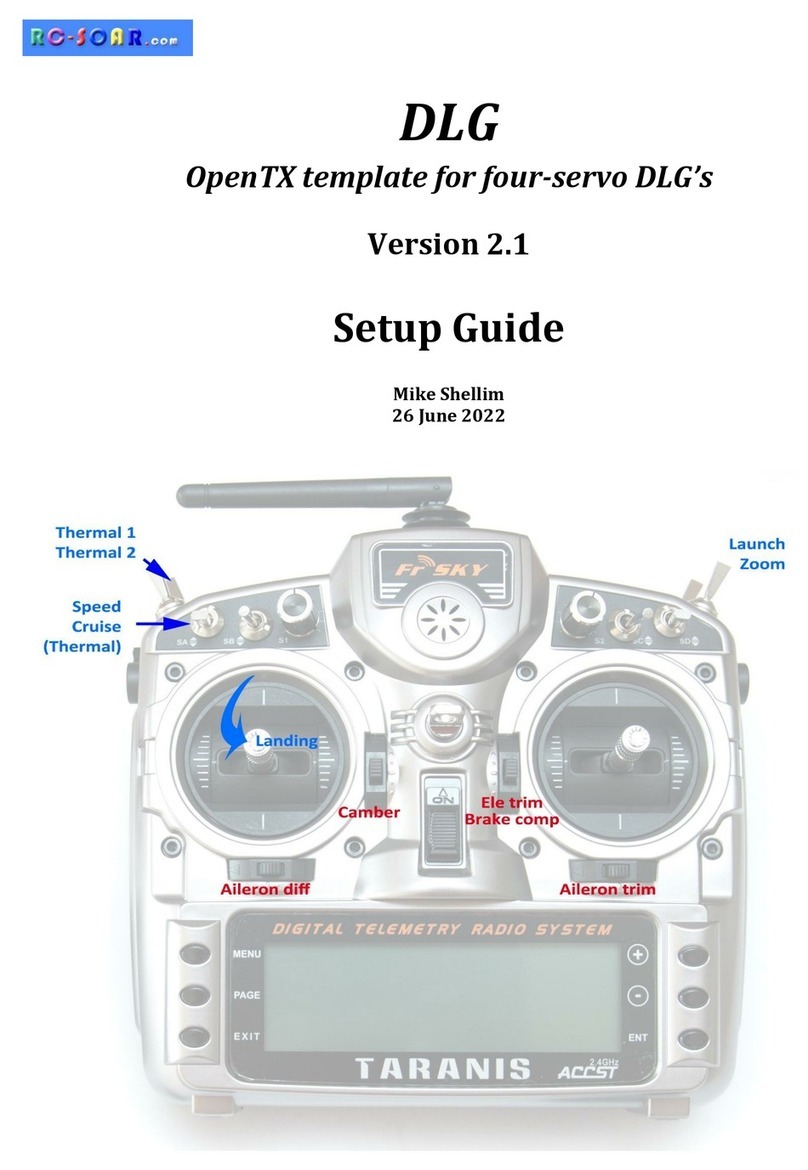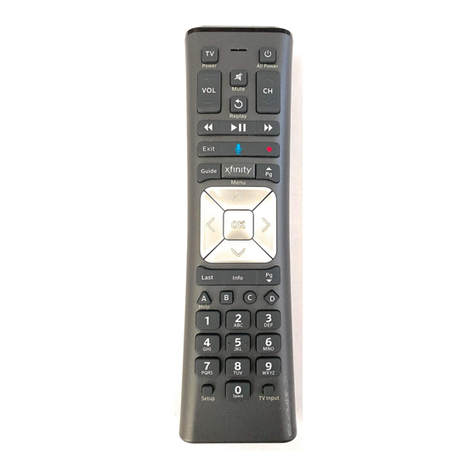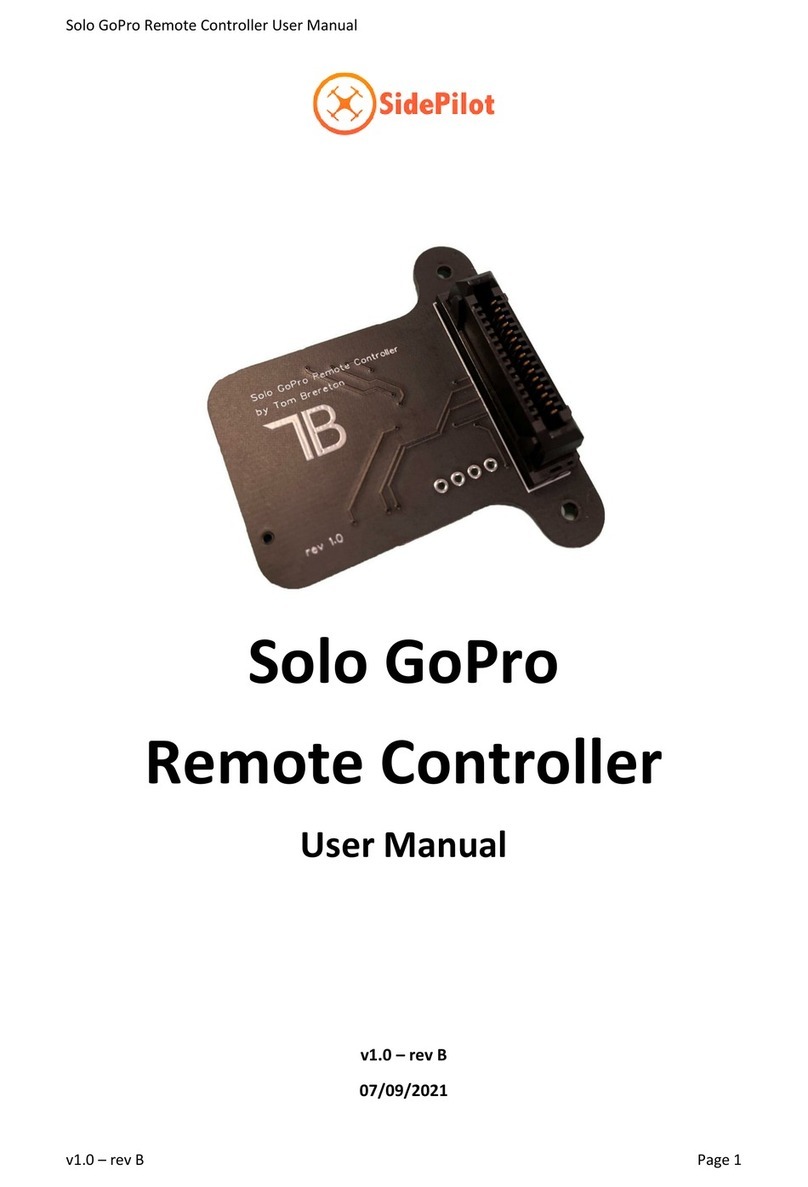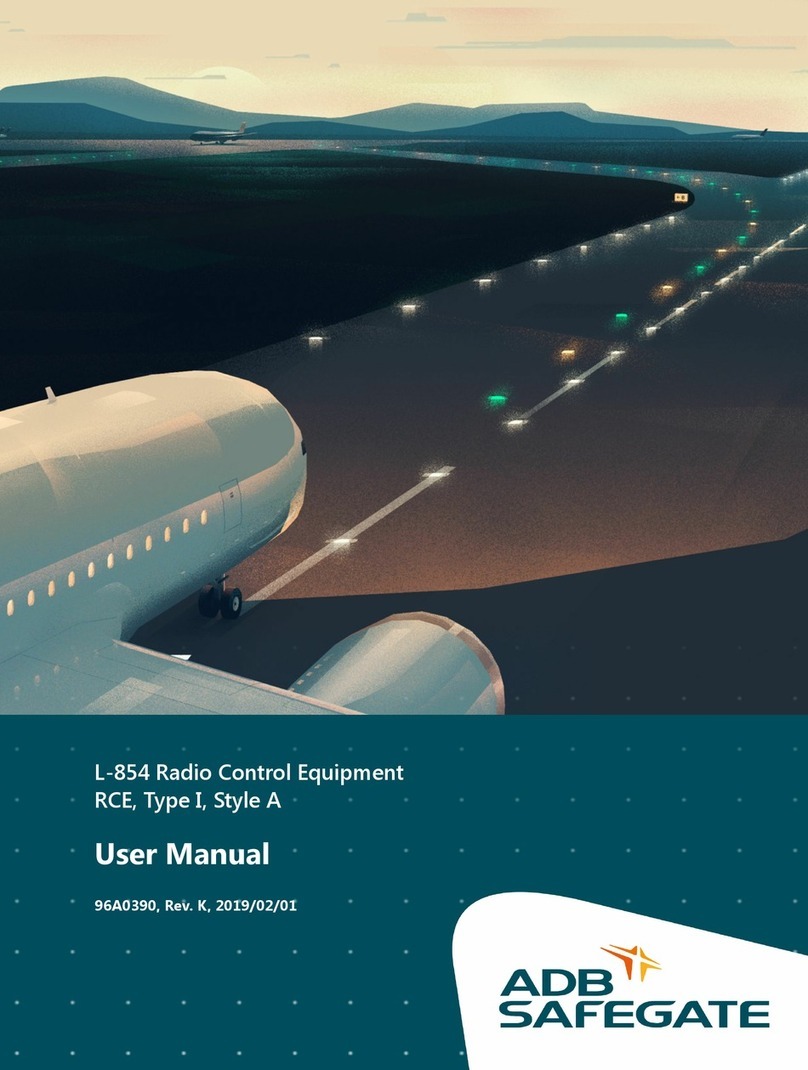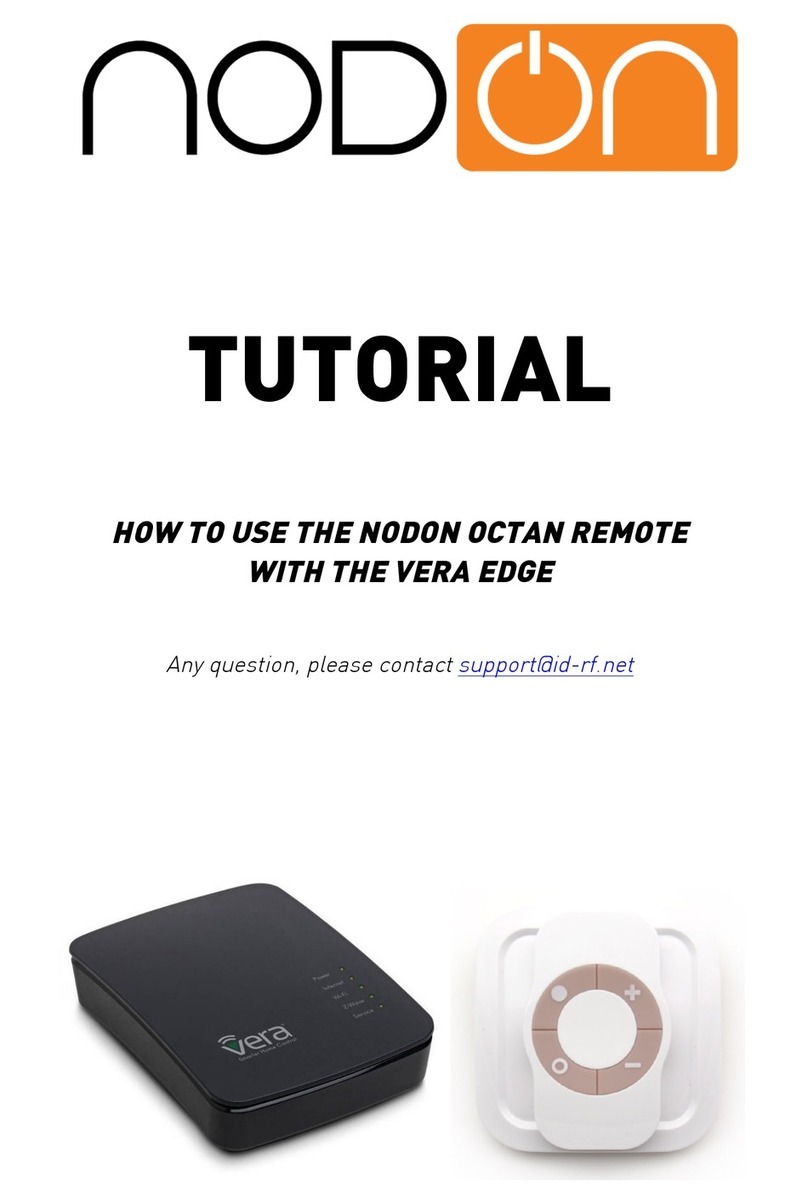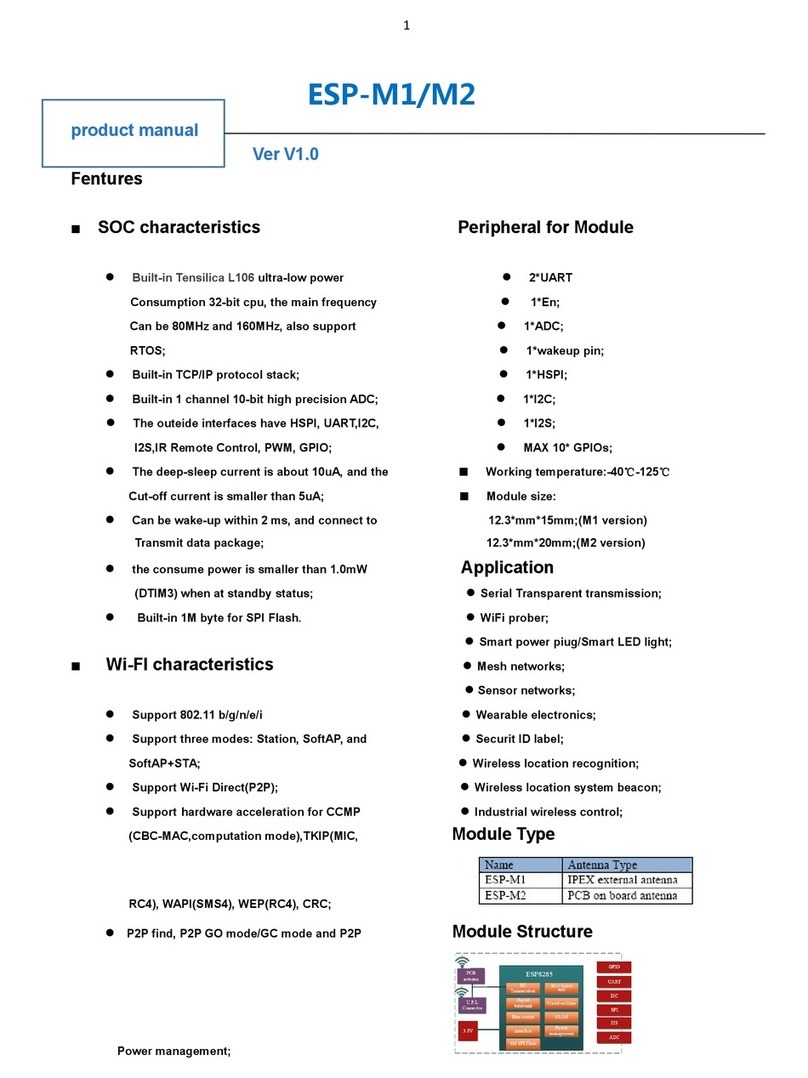elero Protero-868 User manual

181227306_EN_1014
0682
Operating instructions (translation)
Keep the operating instructions in a safe place!
Protero-868
289600006 | 289610006
289600906 | 289610906

2 | EN ࿈elero GmbH
Translation from the original German version.
All other documents in different languages are translations
of the original version.
All rights reserved in the event of registration of patents,
working models or design patents.

࿈elero GmbH EN | 3
Contents
1 General information 5
1.1 Notes on the Operating Instructions 5
1.2 Standards and Directives 6
1.3 Intended use 6
1.4 Warranty and liability 7
2 Safety 8
2.1 General safety instructions 8
2.2 Requirements for the personnel 8
2.3 Safety instructions for operation 8
3 Product description 9
3.1 General information 9
3.2 Scope of supply 9
3.3 Bidirectional radio system 9
3.4 Unidirectional radio system 10
3.5 Principle of function 10
3.5.1 Mounting options 10
3.5.2 Schematic ¿gure Protero-868 11
3.5.3 Teaching the Protero-868 to a receiver
with a taught-in manual or wall transmitter 11
3.5.4 Deleting the programmed Protero-868 13
3.5.5 Threshold values 13
3.5.6 Setting wind sensitivity 13
3.5.7 Waiting time after alarm 14
3.5.8 Battery replacement 14
3.6 System conversion to unidirectional
radio mode 15
3.7 Technical Data 17

4 | EN ࿈elero GmbH
4 Cleaning and maintaining the device 18
5 EC declaration of conformity 18
6 Troubleshooting 18
7 Repair 19
8 Manufacturer's address 19
9 Disposal 20
10 Legal Notes 20

࿈elero GmbH EN | 5
1 General information
1.1 Notes on the Operating Instructions
Please read these Operating Instructions carefully prior to
the ¿rst commissioning and observe the safety instructions!
All activities on and with this device may only be performed
as they are explained in these Operating Instructions.
Please store this document for the Protero-868 for later use.
If you pass the device on to someone else, please hand
them these Operating Instructions as well.
Warning symbols and signal words used in these Instruc-
tions.
Warning symbols and signal words used
Warning!
Warning of danger by electric shock!
Caution!
Observe instructions to prevent injuries and
material damages!
Important:
Observe instructions!
Important:
Further information on the use of this device!
The manufacturer reserves the right to make changes to the
Speci¿cations stated in these Operating Instructions at any
time. These may, in individual cases, be different from the
respective device version, however the functional informa-
tion will not undergo signi¿cant changes or become invalid.
The current version of the Speci¿cations may be requested
from the manufacturer at any time. No claims may be as-

6 | EN ࿈elero GmbH
serted against the manufacturer as a result of the preceding
sentence. Deviations from text or picture statements are
possible and depend on the technical development, fea-
tures, and accessories of the device. Deviating information
on special versions will be explained by the manufacturer
in the sales documentation. Other information shall remain
unaffected by these provisions.
1.2 Standards and Directives
During the design process, the basic health and safety re-
quirements of the applicable laws, Standards and Directives
were complied with. All safety information in these Operat-
ing Instructions refer to the laws and regulations currently
applicable in Germany. All instructions in the Operating
Instructions shall be observed without limitation and at any
time. Beside the safety instructions contained in these Op-
erating Instructions, the provisions for accident prevention,
environmental protection and occupational safety, which are
applicable for the operating site, must be observed. Provi-
sions and Standards for the safety rating can be found in
the EC Declaration of Conformity which also con¿rms the
safety herein.
1.3 Intended use
The device is a battery-operated, wireless vibration sensor
for retractable arm awnings.
The Protero-868 can be operated with the following radio
receivers:
• Radio tubular drives SunTop-868
• Radio tubular drives VariEco-868
• External radio receiver Combio-868 RM
• External radio receiver Revio-868
Detailed information on compatibility with elero receivers
can be found in chapter 3.5 Functional Principle.

࿈elero GmbH EN | 7
Further ¿elds of application have to be arranged with the
manufacturer, elero GmbH Antriebstechnik (see Chapter 8,
Manufacturer's Address).
The operator will be solely responsible for damages result-
ing from improper use of the device. The manufacturer can-
not be held liable for personal or material damages caused
by misuse or procedural errors, and by improper operation
and commissioning.
A use which deviates from the intended use stated by the
manufacturer, elero GmbH Antriebstechnik, is deemed as
foreseeable misuse.
1.4 Warranty and liability
Principally, the General Terms and Conditions of the manu-
facturer, elero GmbH Antriebstechnik (see Chapter 8,
Manufacturer's Address for address), apply. Liability claims
for personal or material damages are excluded when they
can be attributed to one or more of the following causes:
• Unintended use of the device
• Improper installation, commissioning, or operation of the
device
• Structural modi¿cations to the device without the written
consent of the manufacturer
• Operation of the device with improperly installed con-
nections, defective safety devices or improperly installed
safeguards
• Non-observance of the safety provisions and instructions
of these Operating Instructions
• Operation of the device outside the limits speci¿ed in the
Speci¿cations.

8 | EN ࿈elero GmbH
2 Safety
Only use radio systems if they are allowed and can be oper-
ated without interference.
• The remote control is only approved for devices and
systems for which any malfunction of the sensor system
or receiver would not result in a risk for persons, animals
or property, or if such a risk is covered by other safety
equipment.
• Before installing the unit at the required position, check
the proper function of the Protero-868 and the receiver.
2.1 General safety instructions
The Operating Instructions contain all safety instructions
which must be observed in order to prevent dangers inher-
ent to handling the device in connection with the drives
and components to be controlled. A safe use of the device
can only be ensured when all given safety instructions are
observed.
2.2 Requirements for the personnel
• Each person who is tasked to work with the device must
have read the complete Operating Instructions and have
understood the dangers resulting from the use of device
before performing any activities.
2.3 Safety instructions for operation
• You have to check the casing for damages and tightness
prior to the commissioning and regularly afterwards as
well. Never commission a damaged device.

࿈elero GmbH EN | 9
3 Product description
3.1 General information
The Protero-868 recognises vibrations (e.g. caused by
wind) at an awning. The wind sensitivity can be adjusted in
10 stages by a threshold switch.
If the device registers that a set threshold is reached or
exceeded, it will emit a signal to the awning control which
retracts the awning.
3.2 Scope of supply
The purchased product includes the following:
• Protero-868
• 2 batteries of type LR03 (AAA) (enclosed separately)
• Assembly kit
(2 screws, washers, keys each)
• Operating instructions
3.3 Bidirectional radio system
The term bidirectional radio system means the transmission
of radio signals to radio receivers and the response option
for the radio receivers to the transmitter. The radio signal
can be sent directly to the target receiver. If this is not pos-
sible, the radio signal will be routed via other bidirectional
participants until it reaches the target receiver. The target
receiver carries out the command and sends a con¿rmation
back to the transmitter. The prerequisite for a bidirectional
radio system is hence the radio transmitting capability as
well as the radio reception capability of all participating
components.

10 | EN ࿈elero GmbH
3.4 Unidirectional radio system
The term unidirectional radio system means the transmis-
sion of radio signals to radio receivers. As compared to the
bidirectional radio system, the radio receiver cannot return
any feedback to the transmitter. It is also not possible to
pass on the radio signal from one radio receiver to another.
3.5 Principle of function
The Protero-868 can either be taught in bidirectionally or
unidirectionally. In unidirectional function, it can also be
taught to plants that use the predecessor model and thus is
fully backwards compatible.
Note:
The Protero-868 works only in connection with compat-
ible radio receivers of the elero radio system ProLine-868
(ProLine and ProLine 2), radio tubular drives
SunTop-868, VariEco-868, Combio-868 RM, Revio-868.
The Protero-868 can be taught to the following elero receiv-
ers bidirectionally:
• SunTop-868: as of Version V25
• VariEco-868: as of Version V20
• Combio-868 RM: as of Version V79
• Revio-868: as of Version V12
Older receivers: can only be taught in unidirectionally
The Protero-868 may only be programmed for the receiver
on the same awning.
3.5.1 Mounting options
The Protero-868 is attached on the inside of the drop pro¿le
of the retractable arm awning with the enclosed accessories
from the assembly kit.
Ensure before installation that the Protero-868 is not caught
even when the awning is closed.

࿈elero GmbH EN | 11
Extend the awning with a taught hand-held transmitter until
you can install the Protero-868 at the drop pro¿le.
Power down the receiver (drive) during assembly of the
Protero-868.
Open the Protero-868 and carefully remove the upper part
of the housing with the integrated PCB.
Attach the bottom of the housing to the drop pro¿le at ap-
proximately a right angle to its horizontal base line.
Recover the voltage supply for the drive.
3.5.2 Schematic ¿gure Protero-868
Fig. 1 PCB Protero-868
3.5.3 Teaching the Protero-868 to a receiver
with a taught-in manual or wall transmitter
1. Insert the enclosed batteries correctly.
2. Push the button retract (UP), extend (DOWN) and the
teaching button Pat the same time (for 3 seconds) on a
transmitter already taught to the awning.
The status indicator is lit brieÀy. The receiver (awning
drive) is now in programming mode.
Battery compartment
Button "retract"
Threshold
switch Programming key "P"
Battery compartment Button "extend"
Status
display

12 | EN ࿈elero GmbH
3. On the Protero-868 to be taught, keep the teaching
button P pushed for at least 1 second (until the status
display lights up brieÀy). The receiver is now in teaching
mode and signals this by extending and retraction.
4. Push the button retract at the Protero-868 at once (no
later than 1 second) after retraction starts. The status
indicator is lit brieÀy. The awning stops and then contin-
ues to extend.
5. Push the button extend at the Protero-868 at once (no
later than 1 second) after extension starts. The status
indicator is lit brieÀy. The awning stops.
The Protero-868 is taught to the receiver.
Carefully insert the upper part of the housing with the PCB
into the lower part of the housing and screw the housing
together.
Behaviour of the Protero-868 when taught bidirection-
ally to a receiver that is not prepared yet:
After pushing the P button, the drive will not move. The Pro-
tero-868 still is immediately in bidirectional mode. This can
be recognised by the orange light of the status display when
pushing the button at the Protero-868. The drive doesn't
move when a button is pushed.
In this case, the Protero-868 must be deleted again by
concurrent pushing and holding of the button retraction
and extension (see chapter 3.5.4). The Protero-868 can
then be taught only unidirectionally to this receiver. Please
observe: For this, the hand-held transmitter must be taught
unidirectionally as well. The Protero-868 must be pre-set
for unidirectional operation. For this, the Protero-868 must
be empty (no receiver taught) and the receiver must not be
in teaching mode (e.g. powered down). By pushing the P
button, the Protero-868 switches to unidirectional operation.
This can be recognised by the green light of the transmitter
LED when pushing the button at the Protero-868.

࿈elero GmbH EN | 13
3.5.4 Deleting the programmed Protero-868
Push the buttons extract and retract on the Protero-868
concurrently for at least 6 seconds
The Protero-868 is deleted from all receivers.
3.5.5 Threshold values
Position
Threshold
switch
1 2 3 4
*)
5 6 7 8 9 0
Sensitivity
(wind threshold)
1 2 3 4 5 6 7 8 9
10
*) Basic factory setting
Fig. 2 Table Protero-868 threshold values
For a higher setting of the threshold switch, the awning
must vibrate strongly before retracting; for a lower setting of
the threshold switch, the awning only needs to move slightly
to retract.
3.5.6 Setting wind sensitivity
The Protero-868 is delivered with a factory-side basic set-
ting of the threshold switch in level 4.
After assembly and commissioning, it is necessary to adjust
the wind sensitivity of the awning to the situation on site.
There must be no wind when doing this.
1. Extend the awning all the way.
2. Now manually vibrate the drop pro¿le with the installed
Protero-868 to a degree that is comparable to the one at
which the awning is to retract.
3. Depending upon the result (too sensitive or too insen-
sitive) please change the basic factory setting of the
threshold switch.

14 | EN ࿈elero GmbH
Here, the upper part of the housing with integrated
printed circuit board must be unscrewed from the lower
part of the housing.
Observe:
Each new setting must be checked again!
Note:
The awning is likewise protected against the wind during
extension and retraction.
3.5.7 Waiting time after alarm
If the awning is retracted following a wind alarm, exten-
sion is only possible again after a time-out of approx. 15
minutes. During the time-out, any extension command is
stopped automatically after approximately 3 seconds and
an automatic forced retraction takes place.
This time-out can be terminated prematurely by the follow-
ing procedure.
During the time-out, an intended extension is stopped
automatically after approximately 3 seconds and an auto-
matic forced retraction takes place. During this retraction
the STOP button on the taught-in hand-held transmitter
must be pressed and subsequently a retract command must
be given with the UP button (according to retraction). If the
awning is fully retracted, the drive will switch off. The waiting
time has then ended.
After each forced retraction due to a wind alarm, extension
is only possible again after a time-out of approx. 15 min-
utes.
3.5.8 Battery replacement
If the extension of the awning is interrupted twice, this is
a sign that the batteries are nearly empty and should be
replaced soon. Wind monitoring then is no longer active.

࿈elero GmbH EN | 15
If the blind can no longer be extended (short extension,
then retraction), then the batteries must be replaced.
Proceed as follows to replace the batteries:
1. As soon as the awning has retracted, press the exten-
sion button on the hand-held transmitter.
2. The awning now extends for approx. 3 seconds and stops
brieÀy due to the deactivated wind monitoring.
3. Then the awning retracts again. Press the STOP button
at once.
The awning now stops in this position.
4. Disconnect the drive from the power supply!
5. Unscrew the upper part of the housing with the integrated
printed circuit board from the lower part of the housing
and replace the batteries.
After that the Protero-868 is ready for operation again.
Batteries can be removed easily by the end user according
to the battery directive 2013/56/EU.
Dispose of used batteries environmentally compatibly.
3.6 System conversion to unidirectional
radio mode
Use of the Protero-868 at an awning into which the Pro-
tero-868 cannot be bidirectionally taught yet:
1. Deleting the Protero-868
Push the buttons extract and retract concurrently for at
least 6 seconds
2. Deleting the hand-held transmitter of the awning.
Push the buttons UP, DOWN; STOP and P on the hand-
held transmitter concurrently for at least 6 seconds

16 | EN ࿈elero GmbH
3. If pushing the button brieÀy, both the hand-held transmit-
ter and the Protero-868 must Àash orange (transmitters
are empty).
4. Disconnect the awning from the supply grid.
5. Push the P button on the hand-held transmitter for at
least one second. The hand-held transmitter then switch-
es to unidirectional operation.
6. When pushing a button on the hand-held transmitter, it
lights up green (transmitter unidirectional).
7. Connect the awning with the supply grid again.
8. Push the P button on the hand-held transmitter.
The awning is now in teaching mode and signals this by
extending and retraction.
9. Push the UP button at the hand-held transmitter at
once (no later than 1 second) after retraction starts. The
status indicator is lit brieÀy. The awning stops and then
continues, stops and then extends again.
10.Push the DOWN button at the hand-held transmitter at
once (no later than 1 second) after extension starts.
The status indicator is lit brieÀy. The awning stops.
11.The awning can now be controlled via the hand-held
transmitter.
12.Push the teaching button P at the Protero-868 for at
least one second. Then the Protero-868 switches to
unidirectional operation.
13.Recover the readiness of the awning for operation.
Disconnect the awning from the supply grid for a few
seconds, for example.
14.Push the P button on the Protero-868.
The awning is now in teaching mode and signals this by
extending and retraction.

࿈elero GmbH EN | 17
15.Push the retraction button at the Protero-868 at once (no
later than 1 second) after retraction starts. The status
indicator is lit brieÀy. The awning stops and then contin-
ues, stops and then extends again.
16.Push the extension button at the Protero-868 at once (no
later than 1 second) after extension starts. The status
indicator is lit brieÀy. The awning stops.
17.The awning can now be controlled via the Protero-868. If
the Protero-868 is moved too much, the awning retracts.
3.7 Technical Data
Technical Data Protero-868
Operating voltage [V] 3
Batteries 2 x 1.5 V AAA, LR3
Protection type IP44
Permissible ambient
temperature [°C]
-20 to 60
Radio frequency [MHz] 868 (alternatively 915 for
diff. countries)
Colour selection traf¿c white,
traf¿c grey
Dimensions (L x W x H)
Hole distance [mm]
133.3 x 46.5 x 26.5
100.5
Weight [g] 186
Fig. 3 Technical Data Protero-868

18 | EN ࿈elero GmbH
4 Cleaning and maintaining the device
• Clean the device surface with a soft, clean, and dry cloth
only.
• Avoid using chemical solvents or detergents since these
my damage the surface and/or labels of the Protero-868.
5 EC declaration of conformity
elero GmbH hereby declares that the Protero-868 P com-
plies with the basic prerequisites and the other relevant
provisions of the EC directives. The complete declaration
of conformity can be found in the download area of our
website.
6 Troubleshooting
Fault Cause Remedy
Awning retracts
even in the case of
small vibrations
Step is set too low Set the step higher
Awning does not
retract in the case
of vibrations
Step is set too high Set the step lower
Awning does
not react to the
Protero-868 key
commands
Protero-868 not
programmed
Program the Pro-
tero-868
Awning extends
instead of retract-
ing in the case of
vibrations
Protero-868 pro-
grammed incor-
rectly.
Re-program the
Protero-868

࿈elero GmbH EN | 19
Fault Cause Remedy
Awning stalls twice
during extension
Batteries are nearly
Àat
Replace the
batteries in the
Protero-868
Awning extends
only brieÀy and then
retracts again
Batteries are com-
pletely Àat
Replace the
batteries in the
Protero-868
Fig. 4 Troubleshooting Protero-868
7 Repair
If you have any questions, contact your specialist dealer
from whom you bought the Protero-868.
Always indicate the following:
Item number and name on the type plate
Type of fault
Previous and unusual events
Surrounding circumstances
Own assumption
8 Manufacturer's address
elero GmbH
Antriebstechnik
Linsenhofer Str. 65
72660 Beuren
Germany
Phone: +49 7025 13-01
Fax: +49 7025 13-212
www.elero.com
Please visit our website if you require a contact outside
Germany.

20 | EN ࿈elero GmbH
9 Disposal
When disposing of the device you must comply with the
applicable international, national, and local laws and regula-
tions.
Please make sure to consider material recyclability, ease of
dismantling, and separability of materials and components
as well as environmental and health hazards during recy-
cling and disposal.
Packaging
Your Protero-868 is packed to protect it against transport
damage. Packagings are raw materials and can by recycled
or returned to the raw material cycle.
Dispose electrical and electronic components
Disposal and recycling of electric and electronic compo-
nents must comply with the applicable national laws and
regulations.
Never dispose of the Protero-868 in the regular household
waste. If in doubt, ask your local city or community authority
for information on environmentally compatible and proper
disposal.
10 Legal Notes
The information contained in this documentation and the
software are subject to changes due to technical improve-
ments.
Designations such as elero, Protero-868, SunTop-868,
VariEco-868, Combio-868 RM are protected brands of elero
GmbH. All other trademarks (such as product names, logos,
commercial designations) are protected for the bene¿t of
their respective owners.
Other manuals for Protero-868
1
Table of contents
Other elero Remote Control manuals
Popular Remote Control manuals by other brands

Chicago Electric
Chicago Electric 95912 Assembly and operation instructions

Aquatic
Aquatic AQ-WR102F Specifications
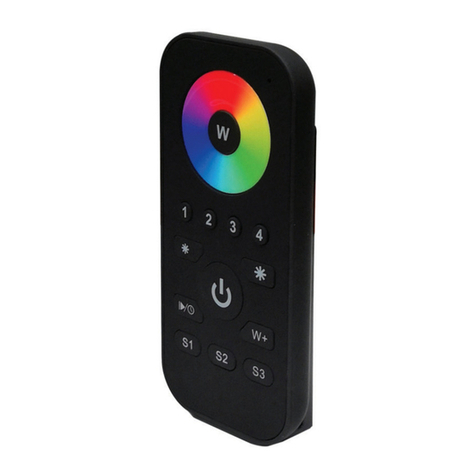
Lumos
Lumos LU4Z-28WI19 manual

CARDIN ELETTRONIC
CARDIN ELETTRONIC S449 Series instructions

Mitsubishi Electric
Mitsubishi Electric PAR-20MAA installation manual
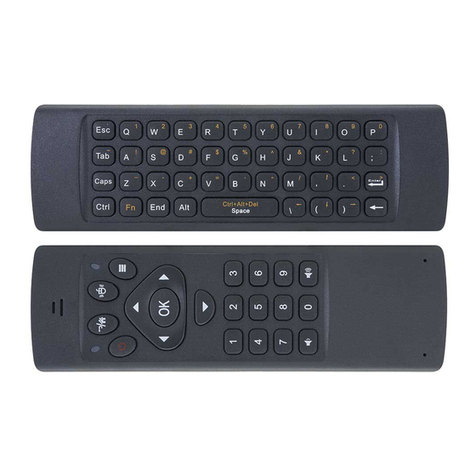
PNI
PNI AirFun One IR user manual

